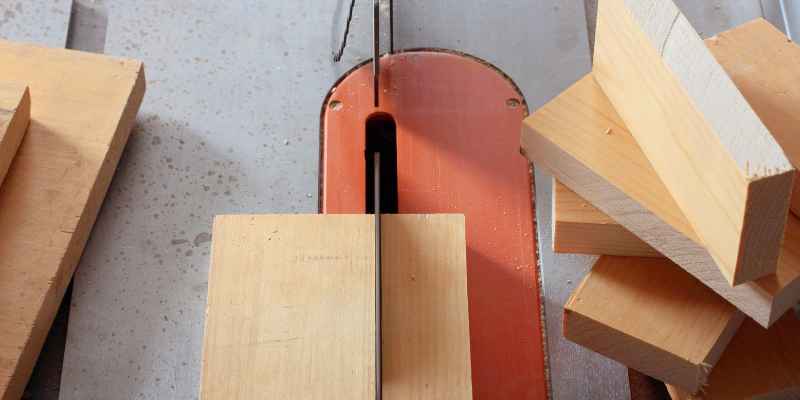A wood weight calculator determines how much weight a piece of wood can hold. We will discuss the factors that affect a wood’s strength and provide guidance on using a wood weight calculator to determine weight capacity.
Understanding the weight capacity of wood is crucial in various applications such as construction, furniture making, and engineering. By using a wood weight calculator, you can ensure that your projects are structurally sound and meet safety standards. In the following sections, we will delve deeper into the calculation process and explore the variables that influence a wood’s weight capacity.
Types Of Wood
When it comes to determining how much weight wood can hold, it is essential to consider different types of wood. The strength and load-bearing capacity of wood can vary depending on its type. Two main categories of wood are hardwood and softwood, each with its own unique characteristics and capabilities. Let’s take a closer look at both types.
Hardwood
Hardwood is often known for its durability and strength, making it a popular choice in various construction projects and furniture making. Hardwood trees, like oak, mahogany, and maple, have slower growth rates, resulting in a denser, more robust wood. This density allows hardwood to withstand heavy loads and offer excellent load-bearing capabilities. You can rely on hardwood when you need to construct sturdy structures or support heavy weights.
Softwood
Unlike hardwood, softwood comes from faster-growing trees such as pine, cedar, or spruce. While softwood may not be as strong as hardwood, it still has impressive load-bearing properties. Softwood is commonly used in construction, especially for framing and structural purposes. It is an ideal material for building walls, roofs, and floors.
Softwood might not be suitable for extremely heavy loads, but its versatility and affordability make it a popular choice for various applications. Additionally, softwood can be treated with preservatives to enhance its strength and resistance to decay, extending its lifespan.
Factors Affecting Weight Capacity
The weight capacity of wood can vary depending on factors such as the type of wood, its size, and the way it’s structured. Using a weight capacity calculator, you can determine how much weight a specific piece of wood can hold.
This tool allows you to make informed decisions when using wood in construction or other applications.
When it comes to determining how much weight wood can hold, several factors come into play. Understanding these factors is essential for calculating weight capacity accurately. The moisture content and grain orientation are two crucial aspects that significantly impact the weight capacity of wood.
Moisture Content
Moisture content is an essential factor in determining the weight capacity of wood. Wood is a natural material that contains moisture in its cellular structure. This moisture can vary, depending on factors such as the climate, storage conditions, and type of wood.
A higher moisture content weakens the wood’s strength, reducing its weight capacity. Wood with high moisture content is more prone to warping, bending, or even cracking under heavy loads. On the other hand, wood with lower moisture content tends to have higher weight capacity, as it is stronger and more durable.
To assess the moisture content of wood accurately, it is advisable to use a moisture meter. This device measures the moisture levels within the wood, providing valuable data for determining its weight capacity.
Grain Orientation
The grain orientation of wood refers to the alignment of the wood fibers. This orientation greatly affects the wood’s strength and weight capacity. There are three primary grain orientations: straight grain, spiral grain, and interlocked grain.
- Straight Grain: Wood with a straight grain orientation features fibers that run parallel to the trunk of the tree. This alignment offers excellent strength, making it the preferred choice for load-bearing applications. Wood with a straight grain orientation has a higher weight capacity and is more resistant to bending or breaking.
- Spiral Grain: Spiral grain occurs when the fibers twist or spiral as they travel up the trunk. This grain orientation may weaken the wood’s structure, reducing its weight capacity compared to straight grain wood. It is essential to consider the direction and degree of spiral grain when assessing weight capacity.
- Interlocked Grain: Interlocked grain refers to wood fibers that interlock or cross each other. This grain orientation can result in irregularities and weaknesses in the wood’s structure, affecting its weight capacity. However, some types of interlocked grain wood, like Teak, can still have decent weight capacity due to their inherent strength.
When selecting wood for a project, it is important to consider both moisture content and grain orientation. These factors can significantly impact the weight capacity and overall performance of the wood. By understanding these factors and carefully incorporating them into your calculations, you can ensure that your chosen wood will meet the weight requirements of your project.
Calculating Maximum Load
When it comes to a wood construction project, calculating the maximum load that a wooden structure can bear is crucial for ensuring safety and stability. The load-bearing capacity of wood can be estimated using formulas or load tables. Let’s explore the methods to calculate the maximum load of wood and understand the factors that contribute to its strength.
Load-bearing Capacity Formula
The load-bearing capacity of wood can be calculated using the following formula:
Load = Fb Cd Ct Cm Cv Ct Cfu- Fb = Reference design value for bending and tension
- Cd, Ct, Cm, Cv, Ct, Cfu = Modification factors for duration of load, temperature, moisture, size, and other relevant conditions
Using Load Tables
Load tables provide pre-calculated load-bearing capacities for wood products based on various factors such as wood species, size, and grade. These tables offer a quick reference for determining the maximum load that a particular wood type and dimension can support.

Applications In Construction
Discover the innovative Applications in Construction with the How Much Weight Can Wood Hold Calculator. Easily determine the maximum weight capacity of wood structures to ensure optimal safety and efficiency. Streamline your construction projects with this essential tool.
Wood is a versatile material that finds various applications in construction. It is crucial in determining how much weight a piece of wood can support. This calculator is beneficial for professionals and DIY enthusiasts alike.
flooring
Wood’s capacity to hold weight is critical when choosing materials for flooring. The calculator can help determine the suitability of different wood types for this purpose.
roofing
Calculating the weight capacity of wood is vital in roof construction. Understanding this can ensure the safety and durability of the structure.
Wood Species And Load Capacity
Oak
Oak is a sturdy wood species known for its high load capacity and durability.
Pine
Pine is a lightweight wood species with a moderate load capacity, suitable for various purposes.
Maple
Maple wood offers a balanced load capacity, making it a versatile choice for different applications.
Enhancing Load-bearing Capacity
Certainly! Here is the engaging blog post section about enhancing load-bearing capacity, including the required
When it comes to understanding the load-bearing capacity of wood, it’s essential to explore ways to enhance its strength and resilience. By implementing reinforcement techniques and engineering solutions, wood can be optimized to hold even greater weights.
Reinforcement Techniques
Reinforcement techniques play a fundamental role in enhancing the load-bearing capacity of wood. By incorporating metal plates, brackets, or laminates, the strength of wood can be significantly increased. The process involves securely attaching additional support structures to the wood, offering a robust and reliable solution.
Engineering Solutions
Incorporating engineering solutions is paramount in maximizing the weight-bearing potential of wood. Utilizing techniques such as truss systems, laminated veneer lumber, or engineered wood products, engineers can create structures that exhibit exceptional durability and strength. This approach enables wood to efficiently bear heavy loads while maintaining structural integrity.
Safety Considerations
Discover the ideal weight capacity of wood structures with our user-friendly calculator tool. Ensure safety standards are met for optimal performance and longevity in your projects. Input your specifications and get accurate results instantly.
When working with wood, especially when calculating how much weight it can hold, it’s crucial to prioritize safety. Understanding the safety considerations involved with load-bearing wood structures can help prevent accidents and ensure the longevity of your project. In this section, we will explore the risks of overloading and the importance of regular inspections.
Overloading Risks
Overloading a wooden structure can lead to disastrous consequences. It can cause the wood to buckle, deform, or even collapse, putting anyone nearby at risk of injury. Therefore, it’s essential to calculate the weight capacity of the wood accurately before loading it with heavy items.
Avoid exceeding the maximum weight limit specified by the wood’s load-bearing capacity. This ensures that the structure remains stable and secure, even under challenging conditions such as high winds or shifting ground.
| Wood Type | Load Capacity |
|---|---|
| Pine | Approximately 25,789 pounds |
| Oak | Approximately 30,678 pounds |
| Maple | Approximately 28,092 pounds |
Always refer to an accurate wood load capacity calculator or consult a structural engineer when determining how much weight your wooden structure can support. They will consider various factors such as wood type, dimensions, and the specific application to provide a reliable weight capacity estimate.
Regular Inspections
While calculating the initial weight capacity is essential, it’s equally important to conduct regular inspections to ensure the continued safety and structural integrity of the wood. Factors such as moisture, decay, insect infestation, and natural wear and tear can weaken the wood over time.
Regular inspections :
- Assess the overall condition of the wood and look for signs of damage, such as cracks, warping, or splitting.
- Check for any signs of pests or termite infestation that may compromise the wood’s strength.
- Monitor moisture levels to prevent rot and decay.
- Inspect any joints, connections, or fasteners for stability and proper installation.
Maintaining a regular inspection schedule ensures timely detection of any issues and allows for prompt repairs or reinforcement, minimizing the risk of structural failure.
In conclusion, prioritizing safety considerations when working with wooden structures is of utmost importance. Understanding the risks of overloading and conducting regular inspections can help ensure the stability and longevity of your wood-based projects.
Future Advancements
Discover the potential of wood with a calculator for estimating its weight-bearing capacity. Easily determine how much weight wood can hold with advanced online tools. Effortlessly plan and design projects, knowing the exact load capacity of different wood types and sizes.
Innovative Wood Composites
Wood has been a reliable material for centuries due to its natural strength and versatility. However, with future advancements in technology and engineering, wood composites are emerging as an exciting area of development. These composites combine wood with other materials, such as polymers or resins, to enhance their strength and durability. Through this innovative approach, scientists and engineers are pushing the boundaries of what wood can achieve, providing even higher weight-bearing capacities for various applications.
Advanced Testing Methods
To ensure the safety and practicality of wood in supporting heavy loads, advanced testing methods are crucial. Engineers are continually pushing the boundaries of existing testing techniques to accurately determine the load-bearing capacities of wood. With the help of state-of-the-art equipment and computer simulations, they can conduct comprehensive evaluations.
These methods analyze various factors, including wood species, moisture content, grain direction, and architectural design, to provide precise calculations on how much weight wood can hold. These advancements in testing methods help architects, builders, and engineers make informed decisions when designing structures that incorporate wood elements.
Calculating The Weight-bearing Capacity
When it comes to determining how much weight a specific piece of wood can hold, several factors play a significant role. These factors include the type of wood, its dimensions, the load distribution, and other environmental conditions.
By using a wood weight calculator, one can estimate the weight-bearing capacity of different wood species, allowing for informed decision-making in various construction projects. These calculators consider essential properties of the wood, such as density, modulus of elasticity, and moisture content. By inputting accurate measurements into the calculator, builders and engineers can obtain reliable estimates that help them design structures that are strong, safe, and efficient.
Ensuring Structural Integrity
With an increased interest in sustainable construction and the use of wood as a primary building material, it is essential to ensure the structural integrity of wooden elements. Through ongoing research and advancements, engineers and scientists are working towards enhancing the strength and resilience of wood. This includes exploring new treatments, such as thermal modification or chemical processes, to enhance wood’s natural properties.
These developments aim to extend the lifespan of wood, improve its resistance against decay, and enhance its load-bearing capabilities. By constantly innovating and pushing the boundaries of what wood can do, we can continue to rely on this eco-friendly material for a wide range of applications.
Investing In The Future
As we look ahead to the future, it becomes evident that wood will continue to be a prominent choice in construction and design. The ongoing advancements in innovative wood composites and advanced testing methods ensure that wood’s weight-bearing capabilities are continually improving.
These advancements not only allow for the creation of more sustainable structures but also open up doors for innovative and exciting design possibilities. By investing in research and development, we can tap into the full potential of wood as a versatile, durable, and environmentally friendly material.

Frequently Asked Questions On How Much Weight Can Wood Hold Calculator
How Much Weight Can A 2×4 Hold Horizontally?
A 2×4 wood stud can typically hold up to 1,000 pounds evenly distributed along its length for horizontal applications. Be sure to consider factors like wood quality, support, and load distribution.
What Factors Affect Wood Weight-bearing Capacity?
Key factors influencing wood’s weight-bearing ability include wood species, quality, size, grain direction, support type, and load distribution. Always consult a structural engineer for precise calculations.
Can Untreated Wood Hold Heavy Weights?
Untreated wood can bear substantial weights, but it’s best for lighter applications. For heavy loads or outdoor use, consider treated or engineered wood for enhanced durability and safety.
Is There A Weight Limit For Hanging Shelves On Wood?
The weight limit for hanging shelves on wood depends on the type of wood, fasteners used, mounting method, and support structure. Consult weight capacity charts or seek professional advice for best results.
Conclusion
In a nutshell, using a wood weight calculator can help you determine the maximum load capacity of wood. By understanding this, you can ensure the safety and stability of your wooden structures. With the right knowledge and tools, you can make informed decisions when working with wood, promoting structural integrity and safety.


